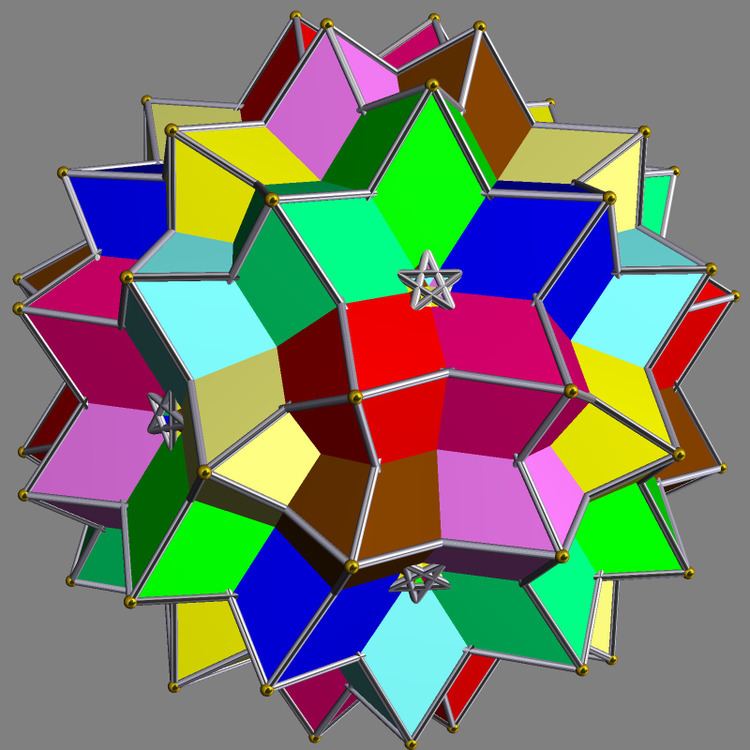 | ||
These uniform polyhedron compounds are symmetric arrangements of 10 octahedra, considered as triangular antiprisms, aligned with the axes of three-fold rotational symmetry of an icosahedron. The two compounds differ in the orientation of their octahedra: each compound may be transformed into the other by rotating each octahedron by 60 degrees.
Cartesian coordinates
Cartesian coordinates for the vertices of this compound are all the cyclic permutations of
(0, ±(τ−1√2 + 2sτ), ±(τ√2 − 2sτ−1))(±(√2 − sτ2), ±(√2 + s(2τ − 1)), ±(√2 + sτ−2))(±(τ−1√2 − sτ), ±(τ√2 + sτ−1), ±3s)where τ = (1 + √5)/2 is the golden ratio (sometimes written φ) and s is either +1 or −1. Setting s = −1 gives UC15, while s = +1 gives UC16.
References
Compound of ten octahedra Wikipedia(Text) CC BY-SA
